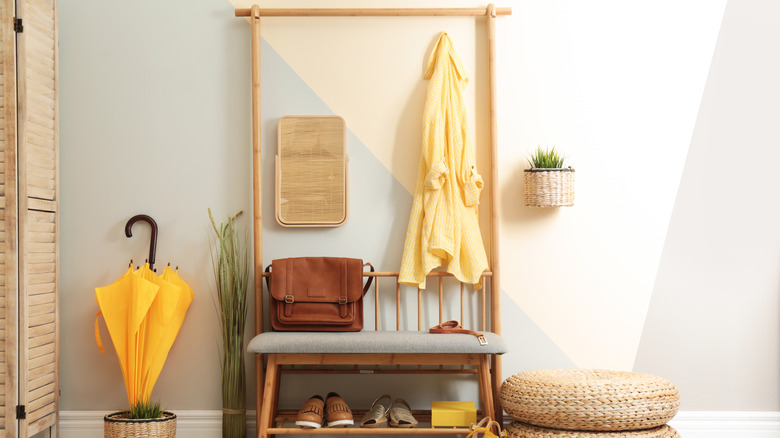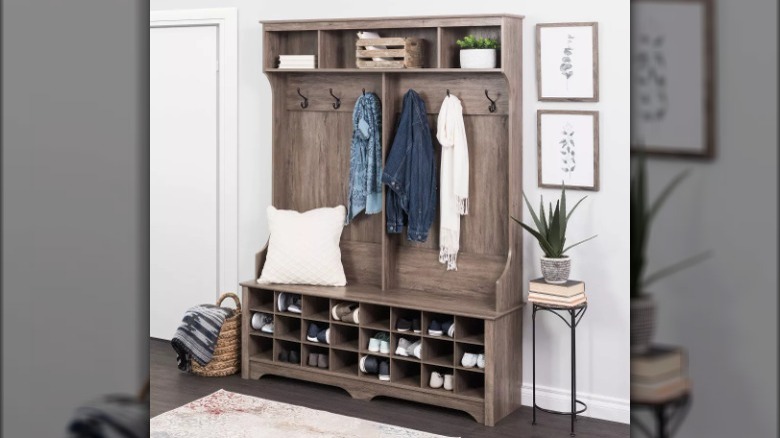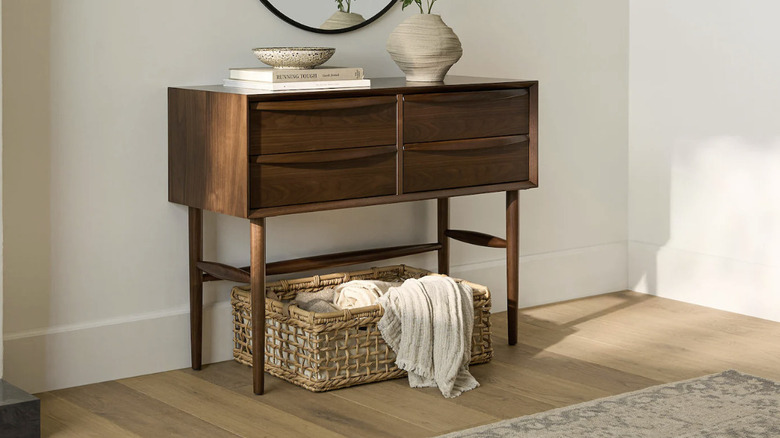The Entryway Decoration Choice Design Experts Avoid At All Costs
We may receive a commission on purchases made from links.
Your entryway might be the most essential area for hosting and showing off your interior. From the moment people cross your front door, they take in your designs and styles, observing and absorbing your vibe. Having an engaging and inviting entryway is very important; you want it to sum up what guests can expect without overwhelming them. When decorating this key space, there are several factors to keep in mind, such as storage. While this is a necessary element, experts recommend avoiding large hangers like a hall tree, which might overpower the area if filled to the brink with various items.
You want people to instantly feel at home and welcome when they walk into your dwelling, and having a tidy foyer or hall is one of the best ways to achieve this. Having a place for people to keep their bags and coats will help relieve them of excess baggage, but getting creative with your storage can also help create a minimalistic and aesthetically pleasing entryway that represents the design elements seen throughout your home.
Don't place hall trees in your entryway
Your entry should be both functional and stylish. Unless your space is very large and open, keeping furniture and décor to a minimum can help encourage a positive experience when people first walk into your home. Many people opt for adding hall trees into their entryways, but interior designer Yvonne McFadden is hesitant to use them. "We shy away from hall trees," she told Southern Living. "Even though they may be structurally beautiful, that gets lost once a pile of heavy winter coats is left hanging on it."
Many hall trees are larger in build, which means they will take up a fair amount of space in your entryway. If you are already working with a smaller area, the more floor space you have for company, the better. Once bigger pieces start taking up the walkway where traffic should flow through, it will feel bottlenecked and cramped. Hall trees can block doors or take away from integral greeting space, and they can get messy if they get too full. Interior designers always warn against clutter, and if guests notice an area feels overloaded, they might subconsciously assume the rest of the house is chaotic as well.
Opt for minimalistic storage
All is not lost when it comes to passing up on a hall tree in your entryway. Instead of these useful but bulky pieces, designers recommend utilizing built-in closets, hidden storage areas, and smaller furniture pieces that can still hold belongings without keeping everything out in the open. A long, slim table is ideal for a hallway entry space and can hold keys, smaller bags, or a few dainty decorations that introduce your home's themes. Small cabinets and dressers with drawers are also useful for holding people's belongings or keeping your important articles conveniently stored until you need them.
Closets that sit inside the foyer or entry can be designated for coats, scarves, sweaters, or even shoes if you prefer your company to remove theirs. If you don't have a built-in closet, armoires can also house excess accessories, but the doors will disguise the clutter so that the area doesn't look messy. These don't have to be bulky — they only need to be large enough to hold a few pieces and keep them from spilling into your hall or entryway, and viola! A fresh, tidy, welcoming area to greet your guests in.


